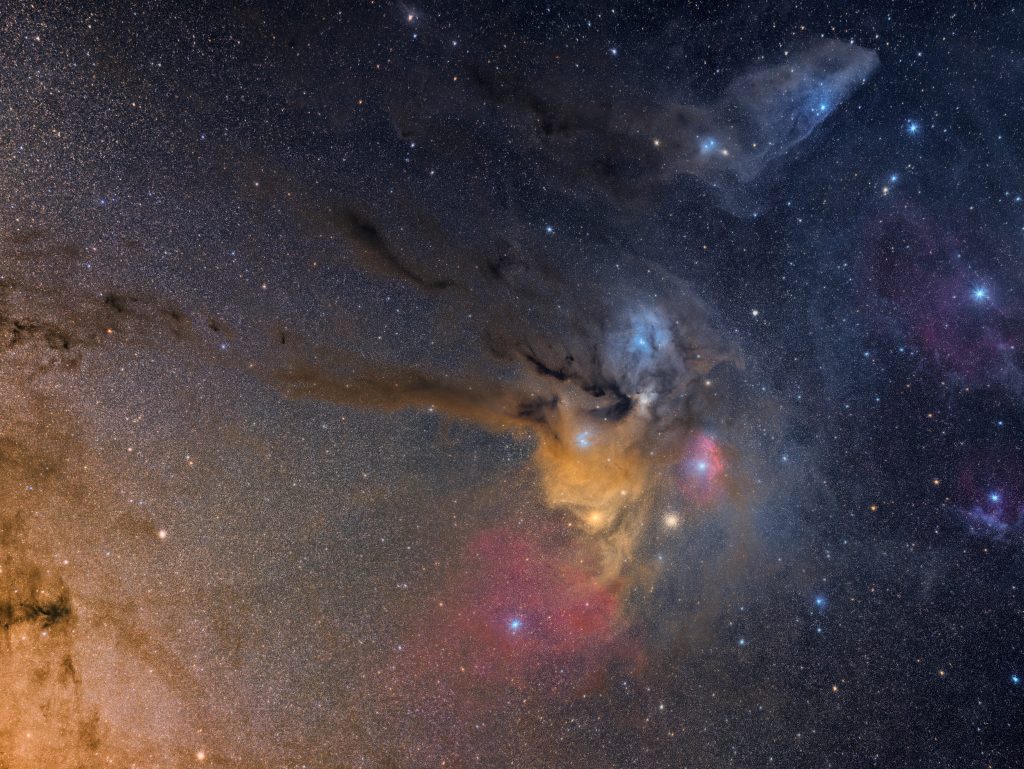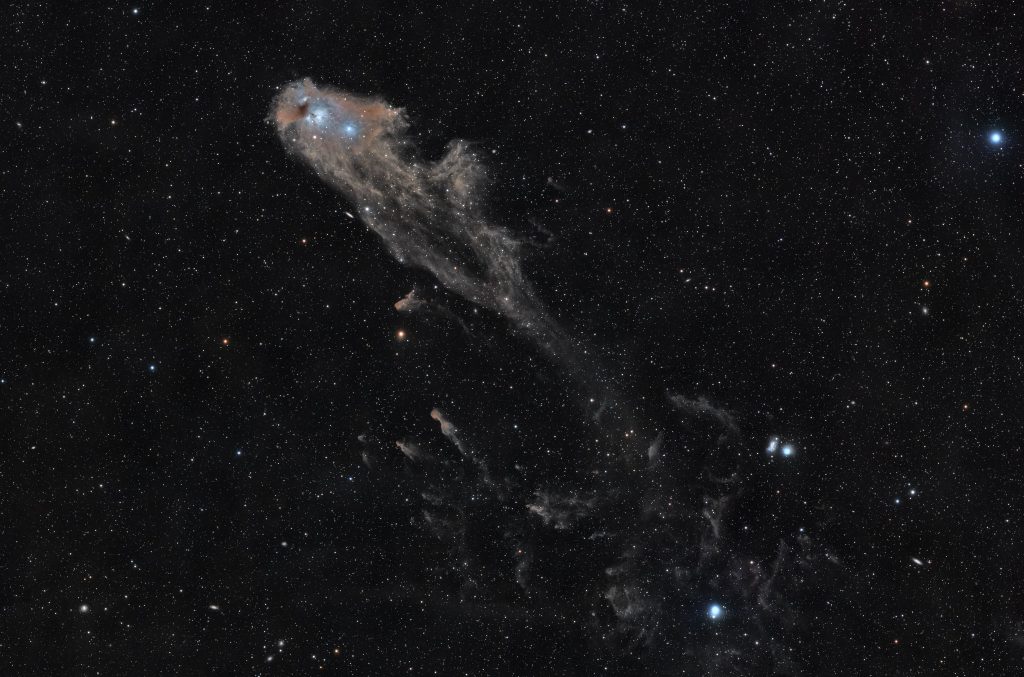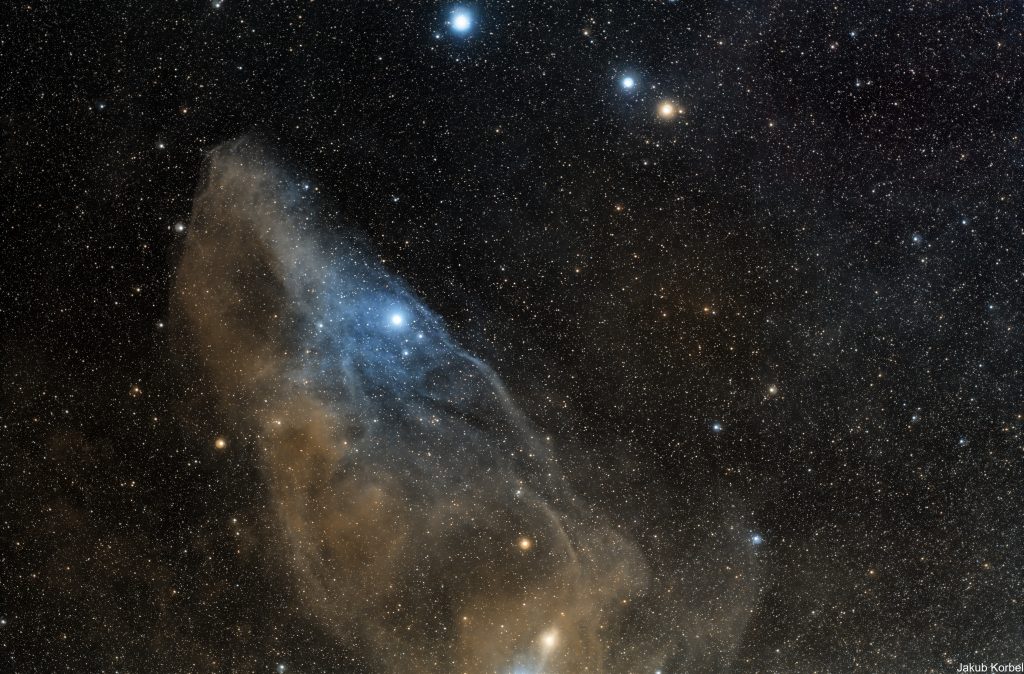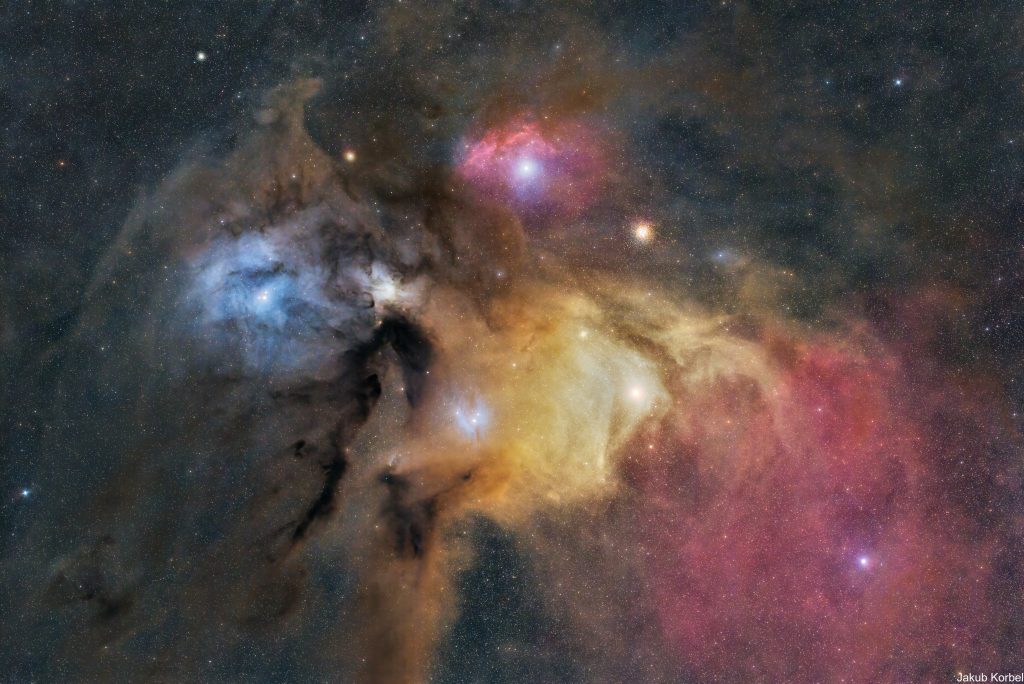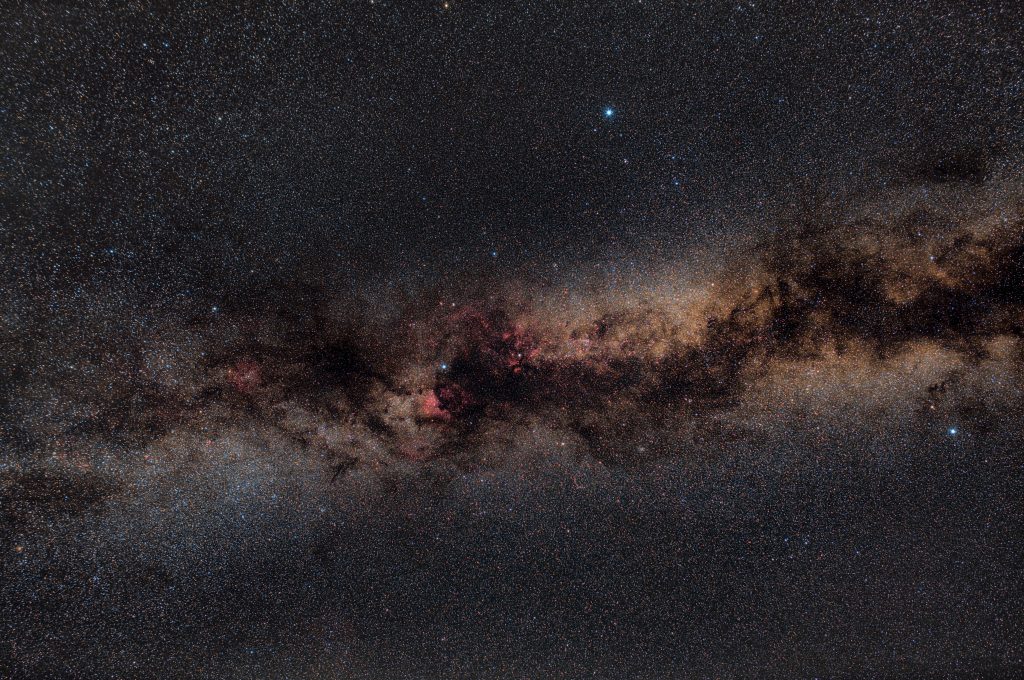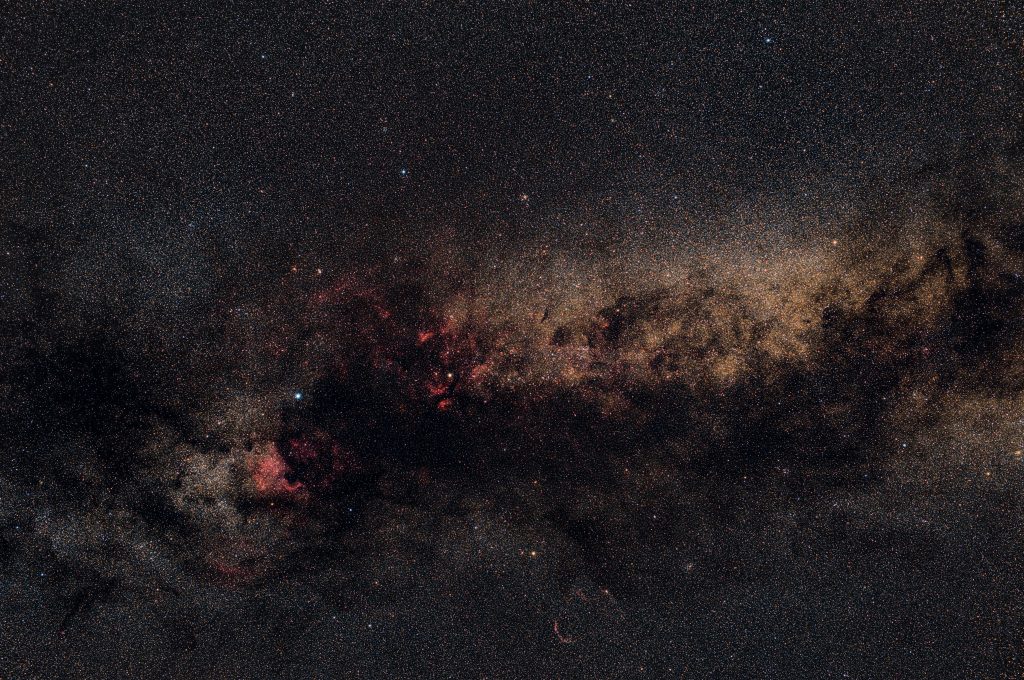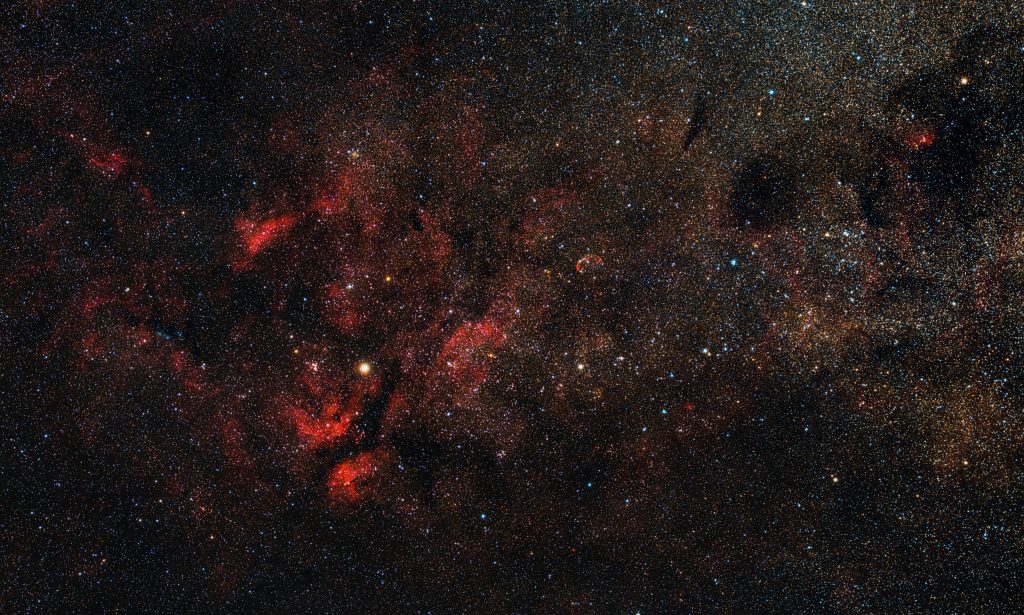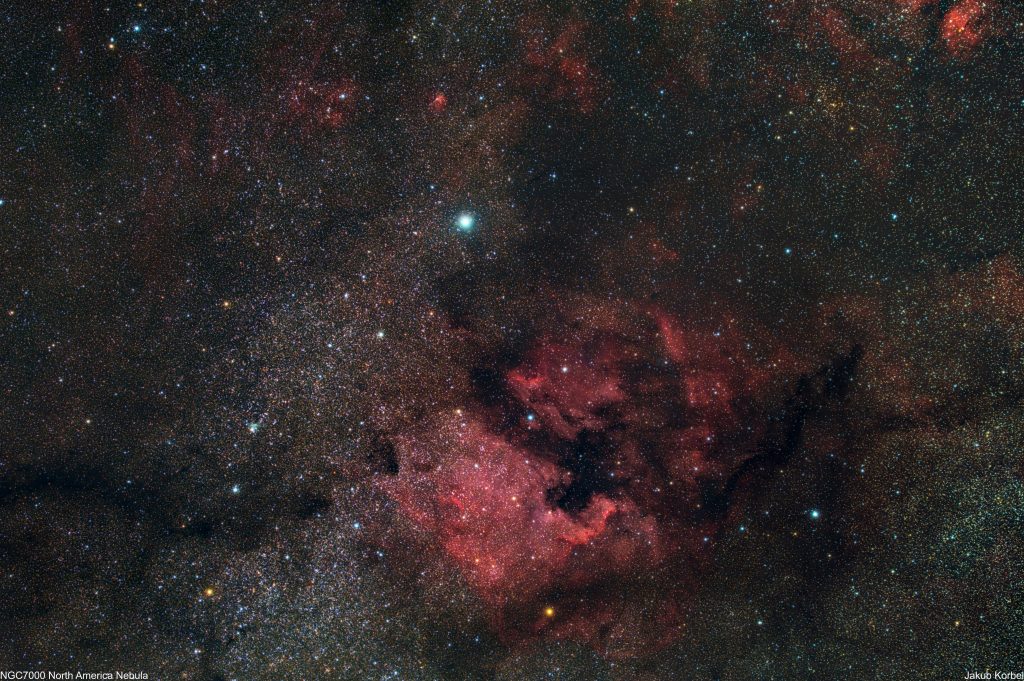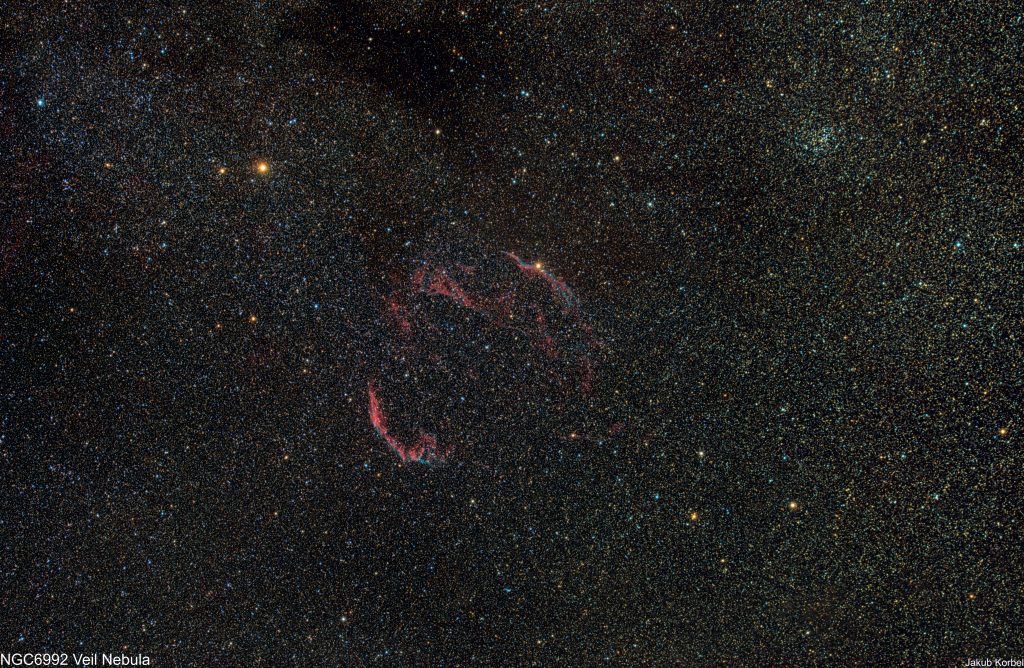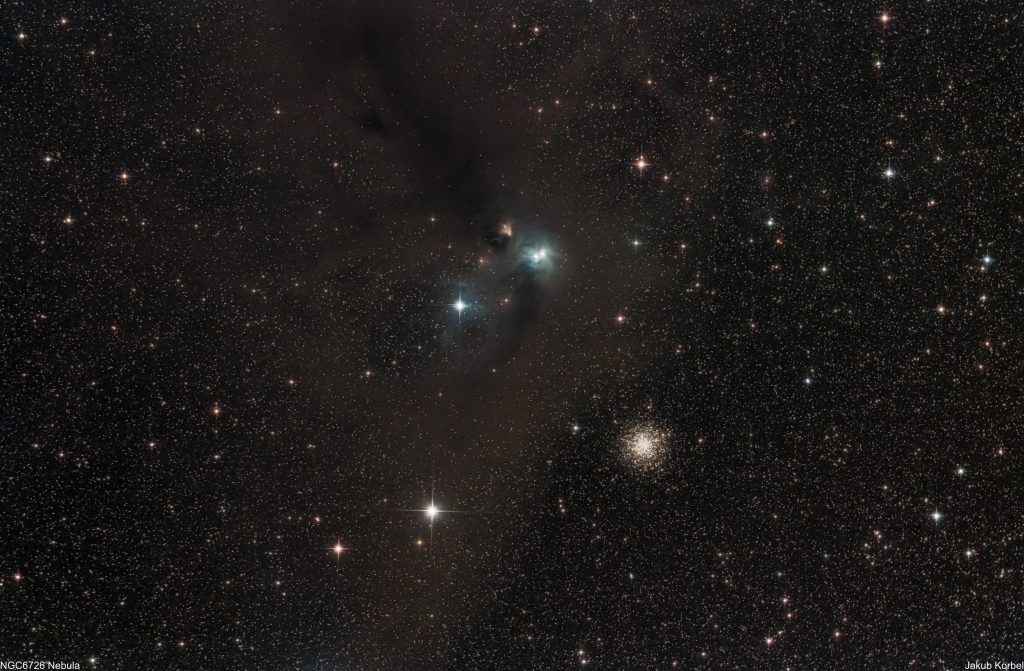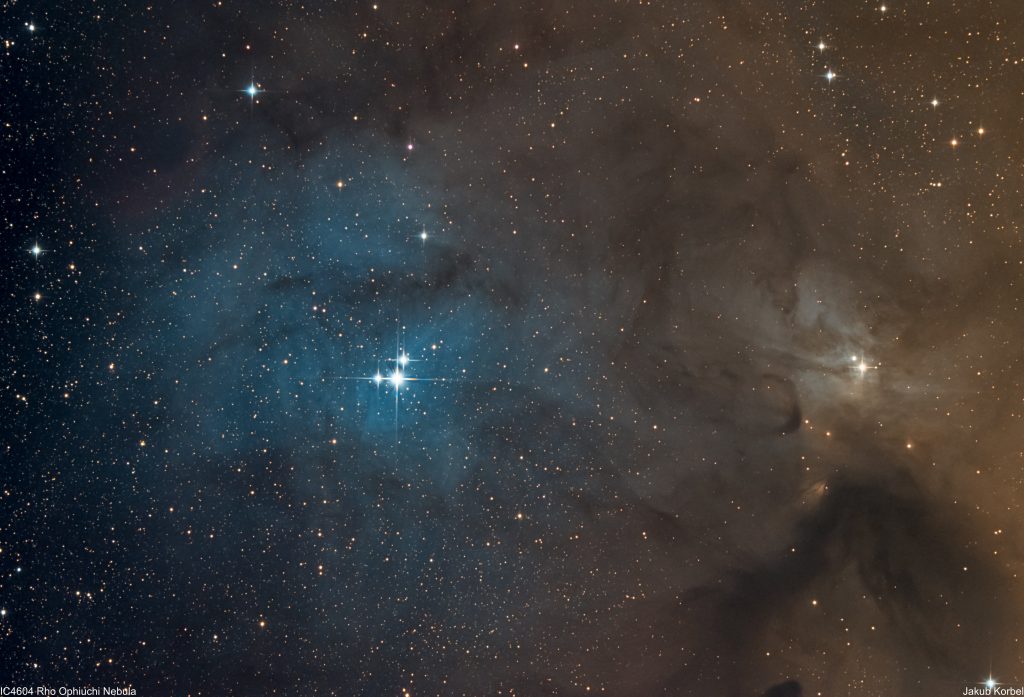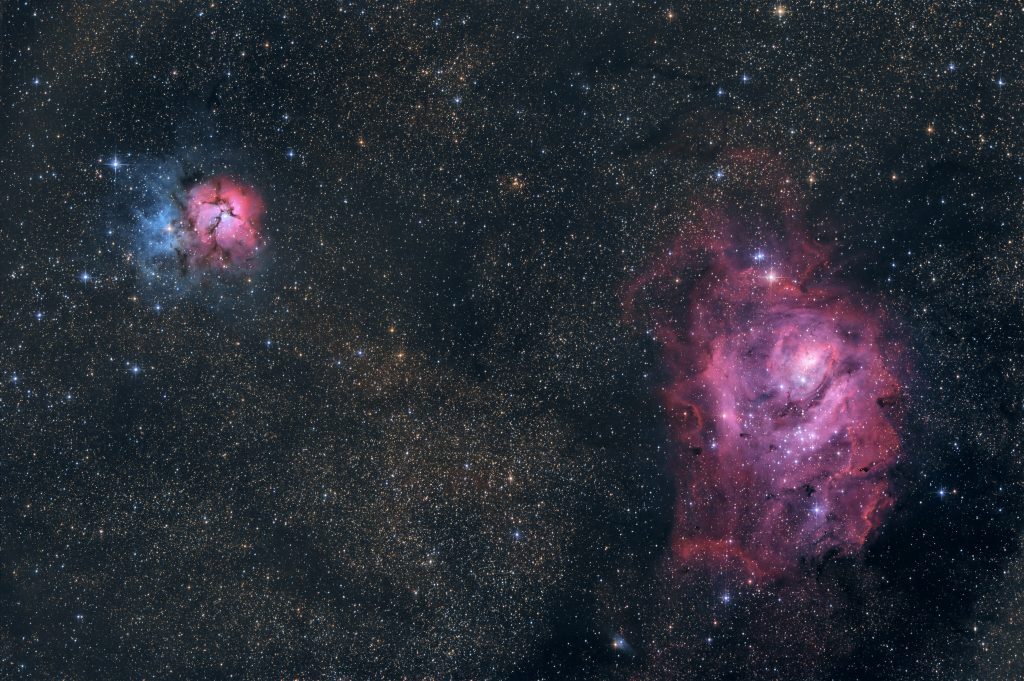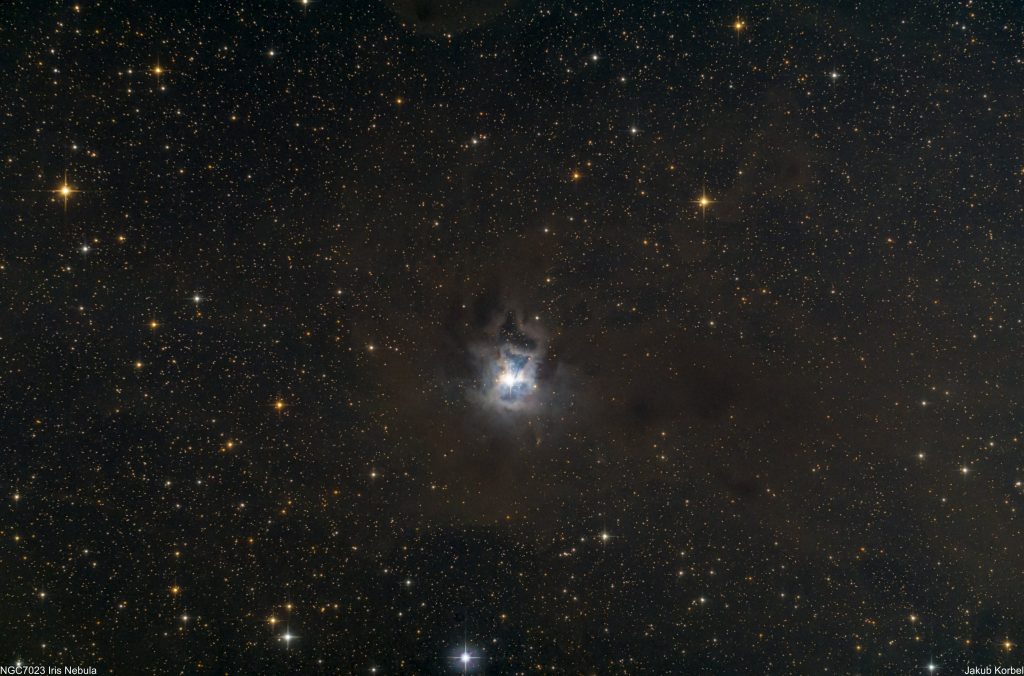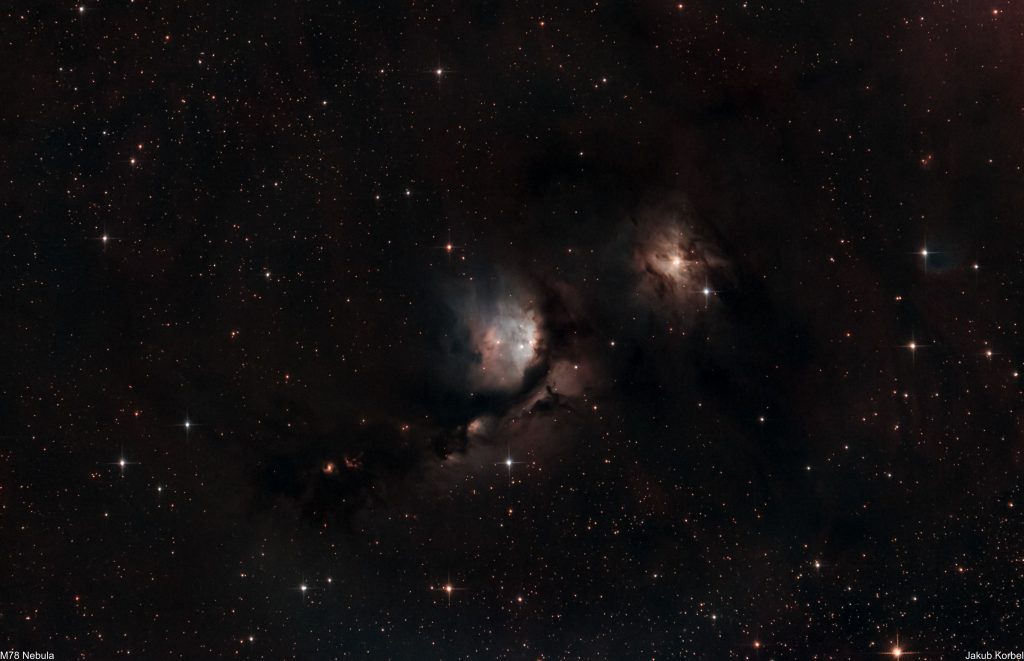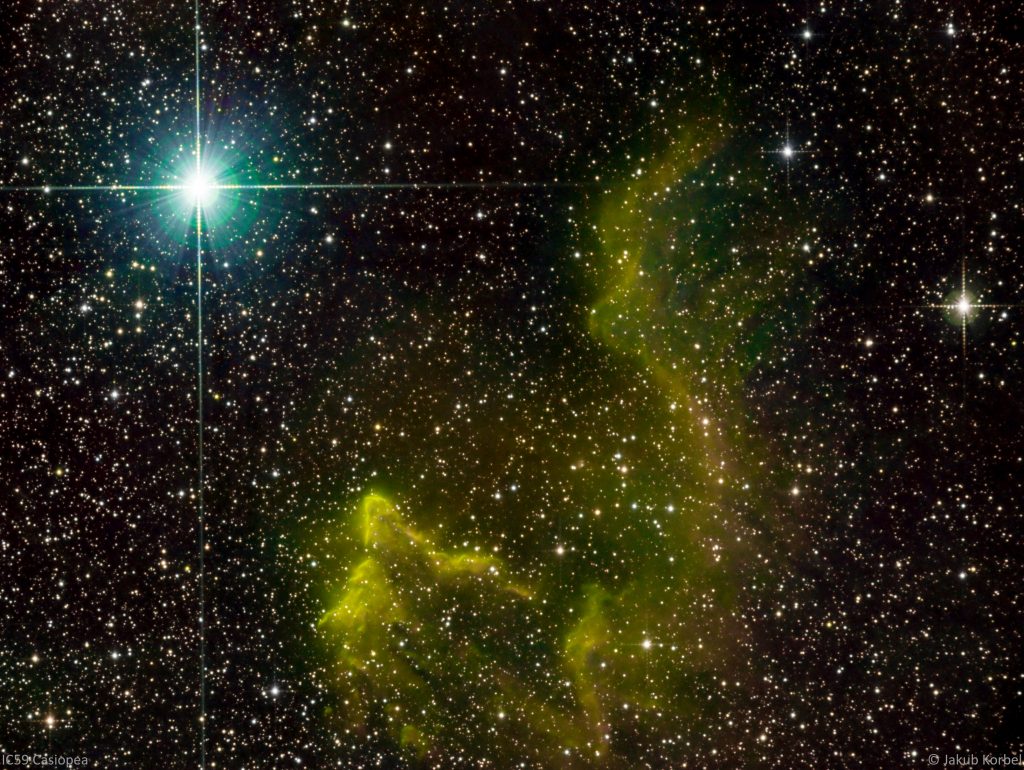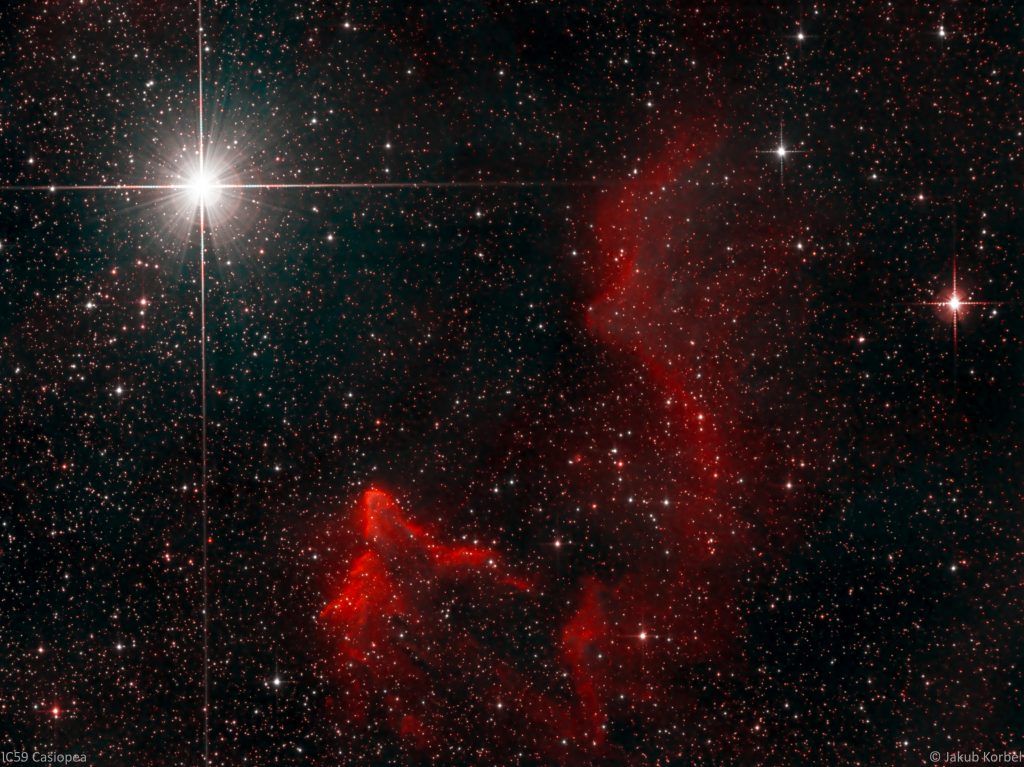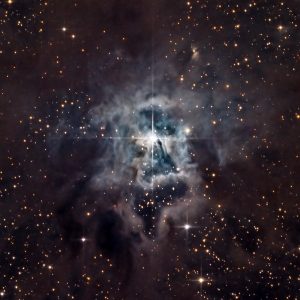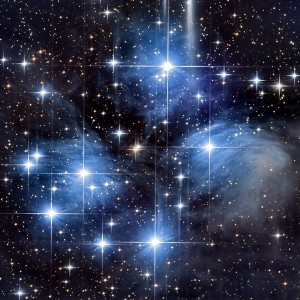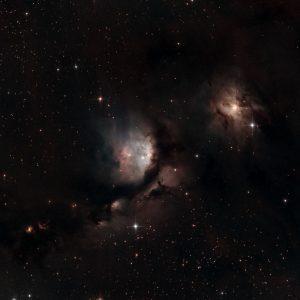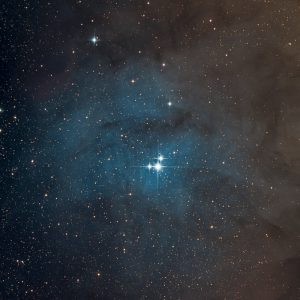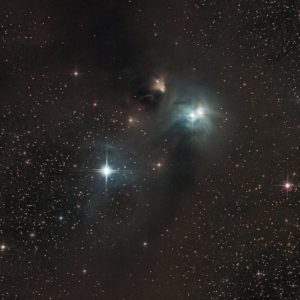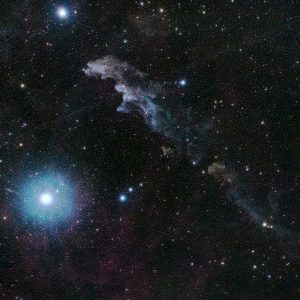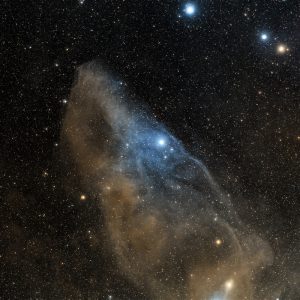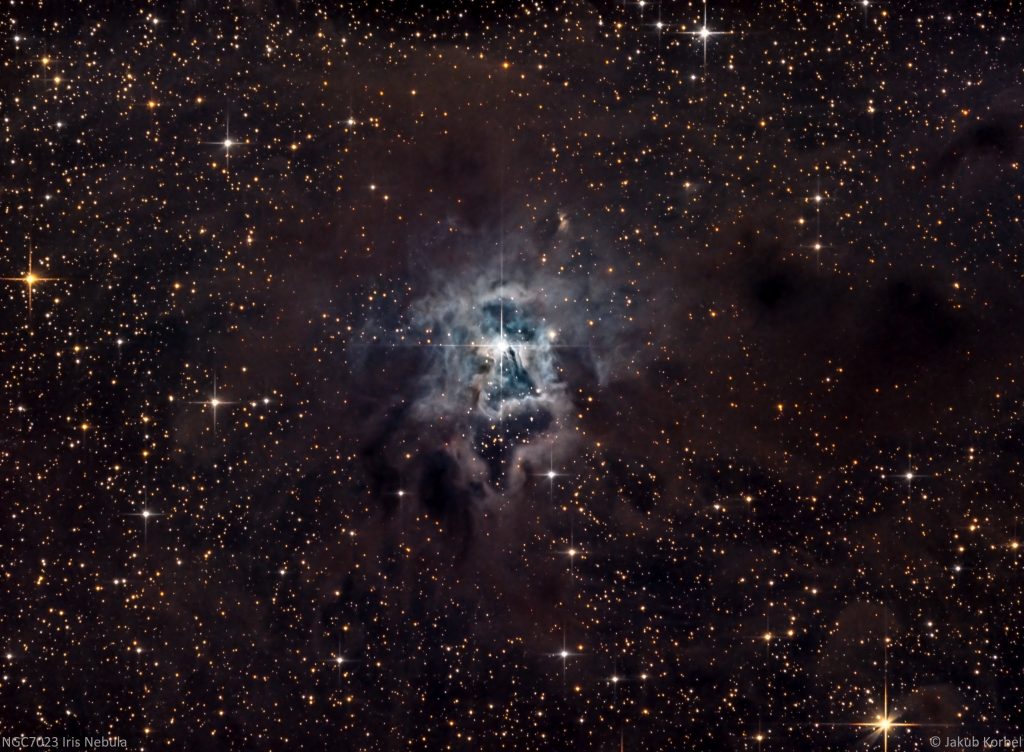The Witch Head Nebula is a striking and eerie interstellar cloud of dust and gas located in the constellation Orion. Its distinct shape, resembling the profile of a witch’s face in profile, is created by the illumination of nearby stars. This nebula spans about 50 light-years across and is primarily composed of hydrogen gas, which glows faintly in the presence of ultraviolet radiation from neighboring stars. The nebula is a site of ongoing star formation, with young, hot stars embedded within its dusty tendrils. Captivating and mysterious, the Witch Head Nebula is a captivating sight in the night sky, sparking the imagination of astronomers and stargazers alike.
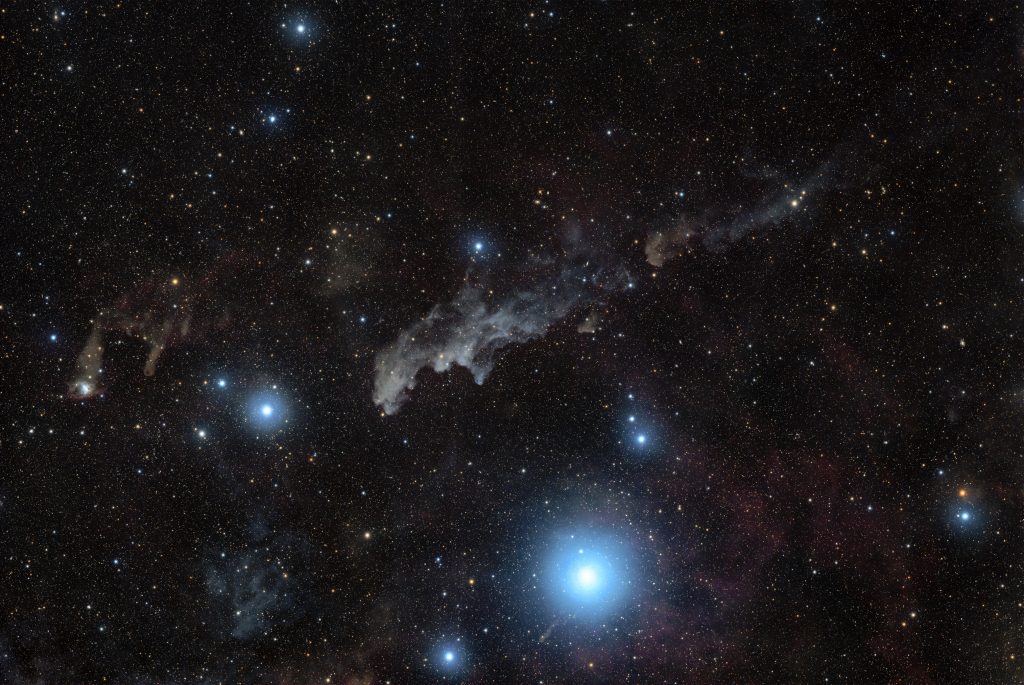
| Telescope | Askar ACL 200 F4 |
| Aperture | 50 mm |
| Focal length | 200 mm |
| Mount | Rainbow Astro RST 135 |
| Autoguiding | ZWO 178MM, QHY Mini Guide Scope |
| Camera | ZWO 6200MC @-10°C |
| Filters | none |
| Exposure | 73x180s, Gain 100, bin 1×1, |
| Date | 2024-01-08 |

